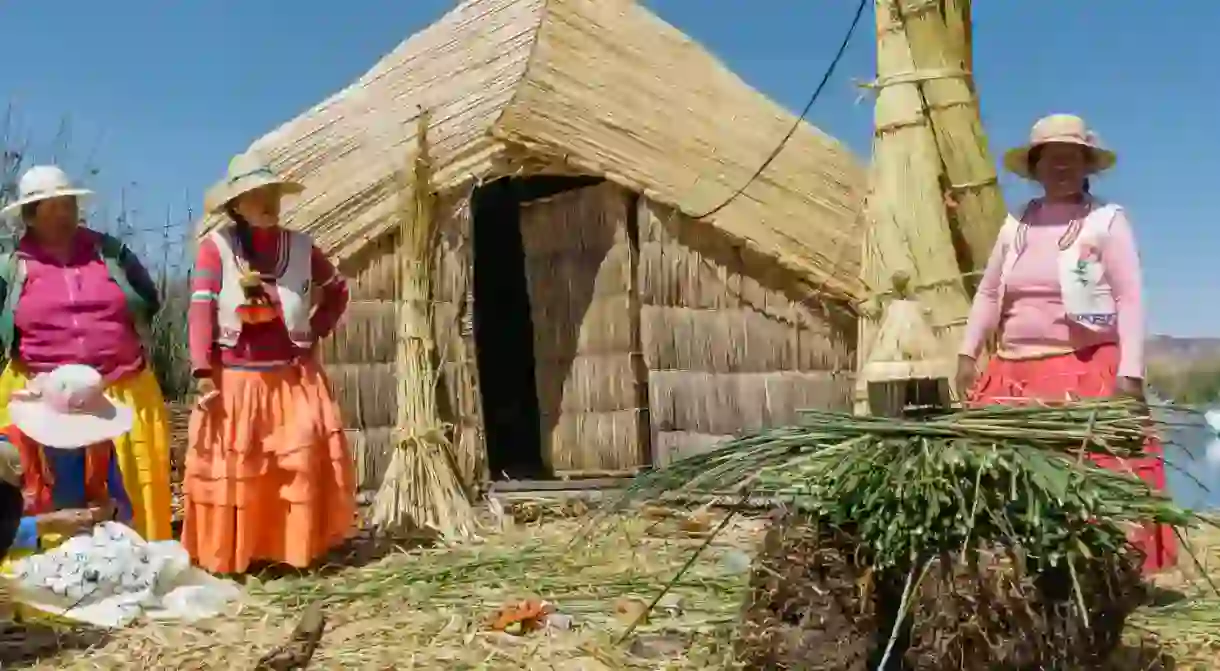How This Peruvian Village is Building Homes on a Floating Island

Out on the middle of Lake Titicaca live the Uros people, who have captured the attention of tourists and the international press with their floating islands made out of reeds, which look like something conjured up by a Disneyland think tank. Their bright colors, floating islands, and water carriages shaped like animals are remarkable and surreal. The Uros poeple are one of the oldest ethnic groups in the Andes; here, they have given us a glimpse into their lives and how they build their famous reed islands.

The cutting of the reeds
The reeds that the Uros use to make their islands and boats grow in abundance in the shallow areas of Lake Titicaca, and that’s where a large group of people will go to begin cutting the reeds out of the water. Traditionally they used a large, sharpened piece of wood to jam down into the mud and cut out blocks of reeds, but nowadays they have large saws that are designed for cutting into the mud where the reeds grow. The blocks are about three feet (one meter) thick and are composed of mud and dirt with reeds sprouting out of the top in tufts. The reeds are cut and stakes are driven into the mud blocks and then tied together so that the blocks don’t move apart. Next, the long process of layering begins.




Building up layers
Once the blocks are in place, the process of layering all the reeds together begins. One layer will be laid down across the blocks of mud and then another layer added on top of that in the opposite direction, so that there is a criss-crossing of layers. These layers are what gives the islands their buoyancy and make them able to support communities of up to 30 people. Finally, eucalyptus trunks are used as anchors to prevent the islands from floating away, say, all the way to Bolivia.




What next?
After the islands are built, the people begin on the construction of their houses and kitchen. The houses are built using the same materials as the islands, but with a wooden frame to give the house structural integrity. The houses have to be built higher up than the island, to help remove some of the humidity, which is a big concern. Once a frame is built, the people fill it in with reeds from the lake. The kitchen is small and the base of it is made of a large, flat rock. Any fires have to be put out immediately, so that sparks don’t cause the island to burn.



Modern comforts
The Peruvian government, through an independent contractor, has recently installed solar panels on all of the islands. The communities will pay a small fee each month for seven years to repay the government. Because of the introduction of electricity to the islands, the Uros now have some of the comforts of modern living, such as fans, televisions, and phones. The added touch of solar panels jutting out of a reed island only adds to the surreal nature of the whole scene.

















